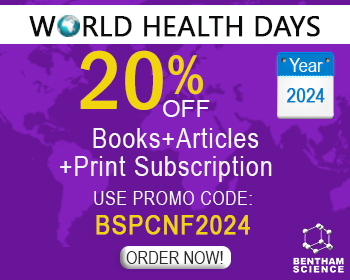Abstract
The suicidal death of erythrocytes should be considered a possible cause of hemolysis and plasma bilirubin overload when there is no evidence of an immune-mediated hemolytic anemia, no consumptive red blood cell disorder, no morphologic or laboratory data to suggest a problem of the red cell membrane, and no evidence of a quantitative or qualitative defect in hemoglobin synthesis.
In neonatal period, xenobiotics, cytokines, osmotic shock, energy depletion, oxidative stress, and variation of temperature may induce an alteration of balance between damaging and protecting factors which can be followed by red cell death. The intraerythrocyte redox balance plays a pivotal role in orchestrating the complex molecular mechanisms leading to eryptosis.
Neonatal erythrocytes are a target of extracellular free radicals and, at the same time, are themselves generators of free radicals through the Fenton reaction.
This review clarifies the complex mechanisms underlying the susceptibility of neonatal erythrocytes to increased oxidative stress.
Keywords: Haemolysis, red blood cells, eryptosis, newborn infants, oxidative stress, erythrocytes.
Current Pediatric Reviews
Title:Mechanisms Involved in the Increased Hemolysis in the Fetus and Newborn
Volume: 13 Issue: 3
Author(s): Bracci Rodolfo, Perrone Serafina and Buonocore Giuseppe*
Affiliation:
- Department of Molecular and Developmental Medicine, University of Siena, viale Bracci 36, CAP 53100,Italy
Keywords: Haemolysis, red blood cells, eryptosis, newborn infants, oxidative stress, erythrocytes.
Abstract: The suicidal death of erythrocytes should be considered a possible cause of hemolysis and plasma bilirubin overload when there is no evidence of an immune-mediated hemolytic anemia, no consumptive red blood cell disorder, no morphologic or laboratory data to suggest a problem of the red cell membrane, and no evidence of a quantitative or qualitative defect in hemoglobin synthesis.
In neonatal period, xenobiotics, cytokines, osmotic shock, energy depletion, oxidative stress, and variation of temperature may induce an alteration of balance between damaging and protecting factors which can be followed by red cell death. The intraerythrocyte redox balance plays a pivotal role in orchestrating the complex molecular mechanisms leading to eryptosis.
Neonatal erythrocytes are a target of extracellular free radicals and, at the same time, are themselves generators of free radicals through the Fenton reaction.
This review clarifies the complex mechanisms underlying the susceptibility of neonatal erythrocytes to increased oxidative stress.
Export Options
About this article
Cite this article as:
Rodolfo Bracci , Serafina Perrone and Giuseppe Buonocore *, Mechanisms Involved in the Increased Hemolysis in the Fetus and Newborn, Current Pediatric Reviews 2017; 13 (3) . https://dx.doi.org/10.2174/1573396313666170718151248
| DOI https://dx.doi.org/10.2174/1573396313666170718151248 |
Print ISSN 1573-3963 |
| Publisher Name Bentham Science Publisher |
Online ISSN 1875-6336 |
 53
53 5
5 1
1 2
2
- Author Guidelines
- Graphical Abstracts
- Fabricating and Stating False Information
- Research Misconduct
- Post Publication Discussions and Corrections
- Publishing Ethics and Rectitude
- Increase Visibility of Your Article
- Archiving Policies
- Peer Review Workflow
- Order Your Article Before Print
- Promote Your Article
- Manuscript Transfer Facility
- Editorial Policies
- Allegations from Whistleblowers
Related Articles
-
Flavonoids and Related Compounds in Non-Alcoholic Fatty Liver Disease Therapy
Current Medicinal Chemistry On Therapeutic Drug Monitoring of Thiopurines in Inflammatory Bowel Disease; Pharmacology, Pharmacogenomics, Drug Intolerance and Clinical Relevance
Current Drug Metabolism Immunostimulatory Oligonucleotides
Recent Patents on Inflammation & Allergy Drug Discovery Manipulating Kynurenic Acid Levels in the Brain – On the Edge Between Neuroprotection and Cognitive Dysfunction
Current Topics in Medicinal Chemistry Immunomodulatory Properties of Thalidomide Analogs: Pomalidomide and Lenalidomide, Experimental and Therapeutic Applications
Recent Patents on Endocrine, Metabolic & Immune Drug Discovery Recent Developments in the Medicinal Chemistry and Therapeutic Potential of Dihydroorotate Dehydrogenase (DHODH) Inhibitors
Mini-Reviews in Medicinal Chemistry 6-Mercaptopurine for Azathioprine Intolerant Inflammatory Bowel Disease: Literature Search and Reappraisal of Own Data
Inflammation & Allergy - Drug Targets (Discontinued) Chemokines and Brain Functions
Current Drug Targets - Inflammation & Allergy Chemoprevention Gene Therapy (CGT) of Pancreatic Cancer Using Perillyl Alcohol and a Novel Chimeric Serotype Cancer Terminator Virus
Current Molecular Medicine Selection of Natural Strains of Fungal Endophytes from Azadirachta indica A. Juss, with Anti-Microbial Activity Against Dermatophytes
Current Bioactive Compounds Reprogramming of B Cells into Regulatory Cells with Engineered Fusokines
Infectious Disorders - Drug Targets Pharmacotherapy of Aortic Stenosis-Success or Failure?
Current Pharmaceutical Biotechnology Replacement of Cyclosporin A from its Binding to Hepatocyte Plasma Membrane by Silymarin Flavonoids
Letters in Drug Design & Discovery Personalized Medicine, Bioethics and Social Responsibilities: Re-thinking the Pharmaceutical Industry to Remedy Inequities in Patient Care and International Health
Current Pharmacogenomics and Personalized Medicine The Mechanisms Involved in Obesity-Induced Male Infertility
Current Diabetes Reviews APO2L/TRAIL: New Insights in the Treatment of Autoimmune Disorders
Recent Patents on Inflammation & Allergy Drug Discovery The Molecular Machinery Regulating Apoptosis Signal Transduction and its Implication in Human Physiology and Pathophysiologies
Current Molecular Medicine Anaemia in Diabetes: An Emerging Complication of Microvascular Disease
Current Diabetes Reviews The Role of Proteomics in Osteoarthritis Pathogenesis Research
Current Drug Targets Metabotropic Glutamate Receptors and Interacting Proteins in Epileptogenesis
Current Neuropharmacology























